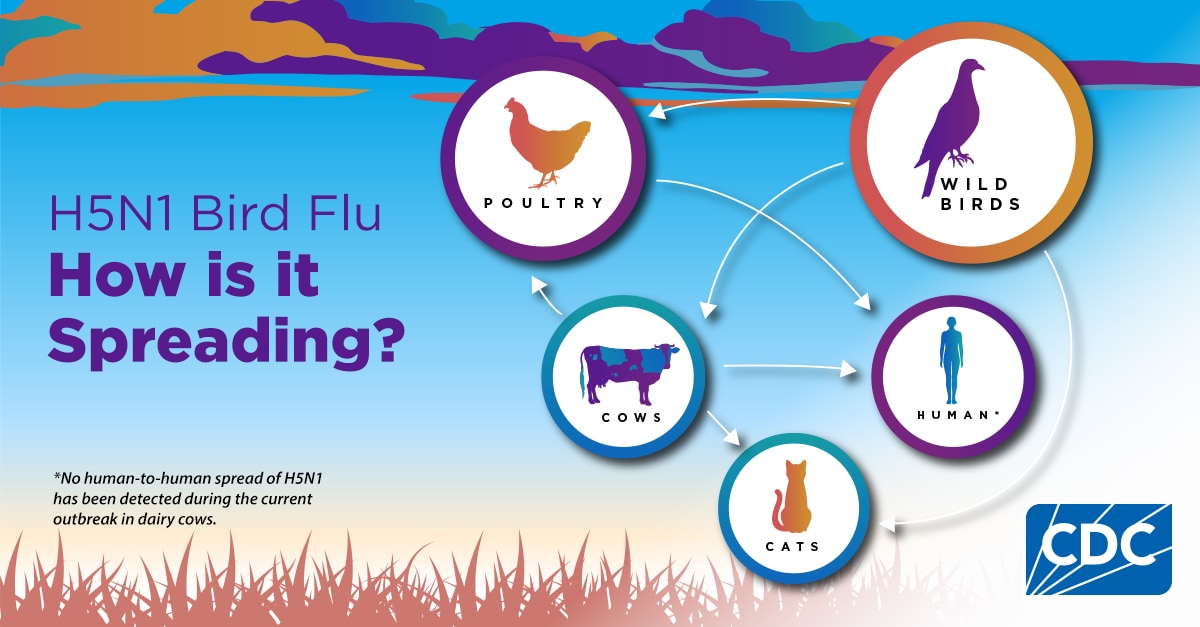What to know
- H5 bird flu is widespread in wild birds worldwide and is causing outbreaks in poultry and U.S. dairy cows with several recent human cases in U.S. dairy and poultry workers.
- While the current public health risk is low, CDC is watching the situation carefully and working with states to monitor people with animal exposures.
- CDC is using its flu surveillance systems to monitor for H5 bird flu activity in people.

Current situation
National situation summary
Situation summary of confirmed and probable human cases since 2024
When a case tests positive for H5 at a public health laboratory but testing at CDC is not able to confirm H5 infection, per Council of State and Territorial Epidemiologists (CSTE) guidance, a case is reported as probable.
Confirmed and probable cases are typically updated by 5 PM EST on Mondays (for cases confirmed by CDC on Friday, Saturday, or Sunday), Wednesdays (for cases confirmed by CDC on Monday or Tuesday), and Fridays (for cases confirmed by CDC on Wednesday and Thursday). Affected states may report cases more frequently.
National flu surveillance (since February 25, 2024)
Targeted H5 surveillance (since March 24, 2024)
Detections in Animals
- 11,966 wild birds detected as of 2/11/2025 | Full Report
- 51 jurisdictions with bird flu in wild birds
- 159,307,978 poultry affected as of 2/14/2025 | Full Report
- 51 jurisdictions with outbreaks in poultry
- 968 dairy herds affected as of 2/12/2025 | Full Report
- 16 states with outbreaks in dairy cows
These data will be updated daily, Monday through Friday, after 4 p.m. to reflect any new data.
Cumulative data on wild birds have been collected since January 20, 2022. Cumulative data on poultry have been collected since February 8, 2022. Cumulative data on humans in the U.S. have been collected since April 28, 2022. Cumulative data on dairy cattle have been collected since March 25, 2024.
